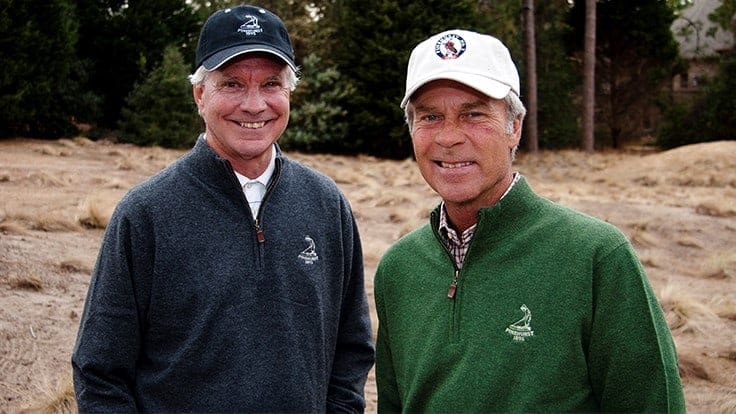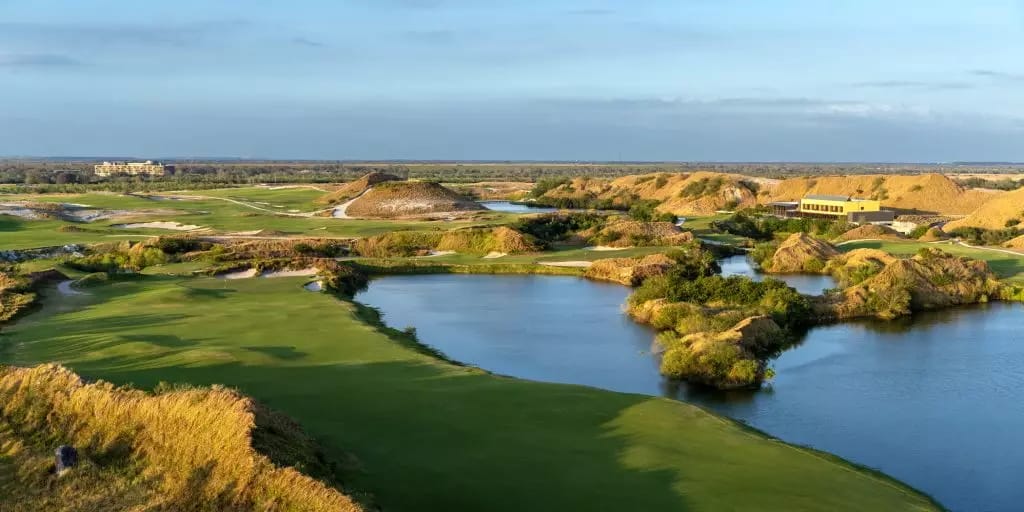
When seeking golf courses that challenge your strategic thinking, Bill Coore and Ben Crenshaw consistently deliver all things extraordinary. The duo’s minimalist philosophy of letting natural terrain guide most design decisions has produced seven of the world’s top 100 courses.
Here’s what also sets them apart: strategy beats power every time.
Major championships and other professional tournaments unfold on their fairways. From Pinehurst’s crowned greens to Kapalua’s volcanic slopes, each layout rewards pinpoint accuracy and course management. PGA TOUR and LIV Golf professionals gravitate toward these designs because they test every aspect of the game without artificial tricks.
Collecting course experiences? Indeed, you’ll appreciate why Coore & Crenshaw represents the apex of modern architecture.
Origins of Coore & Crenshaw Design
Bill Coore’s journey began under Pete Dye’s mentorship before he ventured solo. Then came 1986 when Ben Crenshaw, fresh from his 1984 Masters victory, visited Coore’s Rockport Country Club. What happened next changed golf architecture forever. Their handshake partnership was built on shared reverence for classical design.
Ruling the day are wide fairways offering multiple attack angles and green complexes rewarding creativity over aggression. Nature provides the golf course, and Coore & Crenshaw simply reveal it. No need to move tens of thousands of cubic yards of earth across 18 holes.
The mantras: wide fairways offer multiple attack angles. Greens complexes reward creativity over aggression. At Sand Hills, they proved minimalism works—moving just 4,000 cubic yards of earth across 18 holes. Nature already provided the golf course; they simply revealed it.
To wit, Tiger Woods, Phil Mickelson and Jordan Spieth have all praised how Coore & Crenshaw designs test every shot imaginable, from delicate chips to powerful drives.
Kapalua Resort – Maui, HI

The par-5 18th tumbles downhill toward the Pacific – and Jon Rahm once drove the green from more than 400 yards. Trade winds transform this closer: sometimes it’s a two-shot birdie chance, other times a three-shot battle for par.
Former pineapple fields cling to volcanic slopes where Coore & Crenshaw crafted their first collaboration. Gravity-fed irrigation works with nature, not against it. Their 2019 renovation brought back firm conditions, so now you can use the ground as your ally, running shots onto greens.
Xander Schauffele owns the course record. What draws PGA TOUR stars? Elevation changes and wind calculations create shots you won’t find anywhere else, especially on typical resort tracks.
Sheep Ranch – Bandon, OR
Meet the par-3 16th that requires a 200-yard carry over churning Pacific waters. Many golfers aren’t exaggerating when they call it “the most intimidating tee shot in golf.” Pull it left? Oh, no, your ball becomes ocean debris.
No formal bunkers exist here –none. Instead, windswept fescue and natural contours defend par. Nine greens hover above oceanside cliffs while weathered trees frame your targets. It is links golf stripped to its essence.
Brooks Koepka made the pilgrimage. So did Viktor Hovland. Shot makers thrive because creativity beats distance at Sheep Ranch, exactly why professionals seek out these pure conditions.
Barnbougle Lost Farm – Tasmania, Australia
The par-3 4th shoots across a valley toward Bass Strait, and Adam Scott hit the nail on the head when describing the hefty winds. “More unpredictable than St. Andrews,” he said after watching his ball dance in the breeze.
Twenty holes weave through towering marram grass. Sand formations dwarf players yet provide natural galleries. Wide corridors forgive wayward drives, only if you know where to miss.
Jason Day calls Barnbougle Lost Form Australia’s finest examination. Marc Leishman agrees. International stars add Tasmania to their itineraries specifically for this remote test of skill.
Streamsong Red Course – Bowling Green, FL

The par-4 6th tempts aggressive players to drive the green over water. Or should they play it safe? Scottie Scheffler went for it during a corporate outing. Two eagles proved his point about calculated risks.
Phosphate mining left 100-foot sand ridges and azure lakes – not your typical Florida landscape. Coore & Crenshaw saw opportunity where others saw wasteland. Now firm fairways and sandy scrub evoke Scotland’s links, not Orlando’s parkland.
Rory McIlroy tunes his game here before Florida Swing events. Why? Conditions mirror Open Championship venues thanks to wind, firmness and creative shot requirements.
Cabot Cliffs – Inverness, Nova Scotia
Drop 175 yards from cliff to green on the par-3 16th where Gulf of St. Lawrence winds affect every millisecond of ball flight. Justin Thomas nailed it: “golf’s most photogenic hole.”
Ocean views dominate the clifftop routing while forest holes provide contrast. Bunkers frame shots rather than simply punish mistakes. Natural land movement ensures you’ll rarely find a flat lie. It’s all classic Coore & Crenshaw architectural thinking.
Bryson DeChambeau chartered a flight here. Several LIV Golf stars followed. Cabot Cliffs’ remote location adds privacy these players crave, not to mention bragging rights few can match.
Sand Valley – Nekoosa, WI
The par-5 opener introduces prehistoric blowout bunkers. Tony Finau learned that bombing drives doesn’t always help as his ball found sand that predates civilization.
Wisconsin farmland hid ancient dunes until Coore & Crenshaw exposed them. Native fescue eliminates irrigation beyond greens. Every hole flows naturally into the next, promoting —walkability.
PGA TOUR players compare conditions favorably to Nebraska’s Sand Hills. That’s certainly high praise!
Pinehurst Resort No. 2 – Pinehurst, NC
The par-4 5th showcases Pinehurst’s crowned greens where anything less than a perfect shot rolls away. Martin Kaymer’s 2014 U.S. Open approach landed inches from disaster yet held. Precision or bust.
Forty acres of rough disappeared, sandy waste areas were added and greens significantly expanded in Coore & Crenshaw’s 2014 restoration. Yet they still honored history while enhancing playability, masterfully achieving a delicate balance.
Payne Stewart immortalized Pinehurst No. 2 and DeChambeau dominated it. Every professional considers Pinehurst mandatory preparation for major championships.
Ready for Your Next Journey?

You’ve seen what makes Coore & Crenshaw special. Now it’s time to experience these courses yourself. Talk with a Private Aviation Advisor at Magellan Jets for bespoke flight solutions tailored to remote course access.







